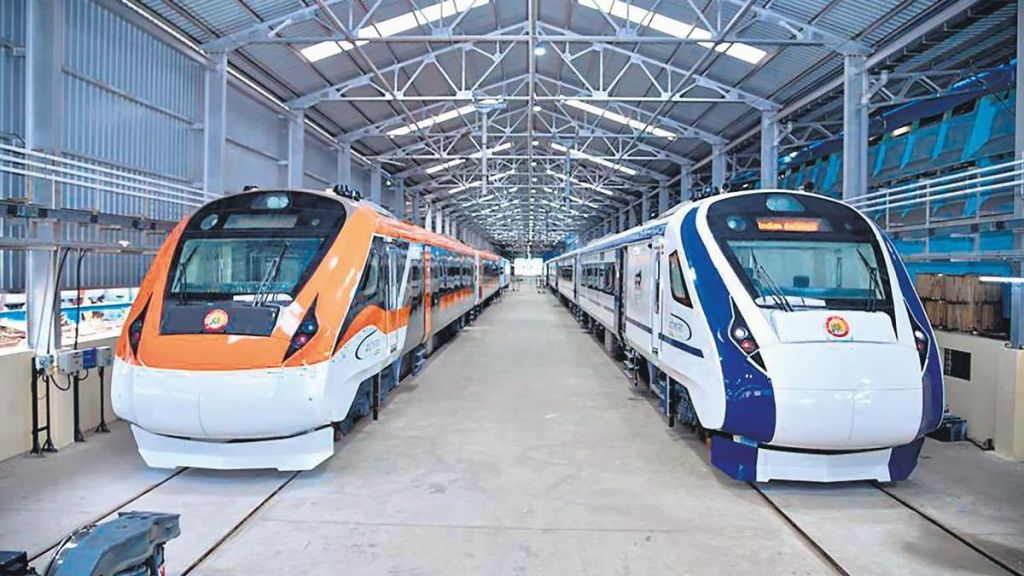The Ministry of Railways, in a response to an RTI query, informed that the average speed of Vande Bharat Express trains has decreased from 84.48 kmph in 2020-21 to 76.25 kmph in 2023-24. According to the railway official, this decline in speed is not only limited to Vande Bharat Express trains but also other trains as many areas are undergoing significant infrastructural development.
“Besides this, some Vande Bharat trains have been launched in difficult terrain areas where there are speed restrictions due to geographical reasons or extreme weather conditions,” a railway official said.
What factors contribute to the decrease in speed of Vande Bharat Express trains?
While citing the example of the Vande Bharat train between Mumbai CSMT and Madgaon, which traverses through the hilly Konkan railway region, the official said, “Most of the Konkan railway area is ‘ghat’ section where trains pass through low height mountain ranges. It is a difficult terrain area where increasing speed could compromise safety.”
“Things become very challenging during the monsoon season when we have to keep the maximum speed for all trains at 75 kmph,” he added.
Infrastructure hurdles affecting efficiency of Vande Bharat Express trains?
Madhya Pradesh-based RTI applicant Chandra Shekhar Gaur noted a decline in Vande Bharat’s average speed, emphasising a drop from 84.48 kmph in 2020-21 to 76.25 kmph in 2023-24. Despite being capable of reaching speeds up to 160 kmph, the Vande Bharat is constrained to 130 kmph or lower due to track conditions, except on the Delhi-Agra route, where certain segments allow speeds up to 160 kmph.
“There are certain segments of tracks between Delhi and Agra which were developed in 2016 for India’s first semi-high speed train Gatiman Express to run at 160 kmph. Only on those segments, the Vande Bharat also runs at 160 kmph speed. Rest of the places, its maximum speed is either 130 or less than,” another railway official said.
However, some routes witness speeds lower than the Vande Bharat’s average, including Dehradun-Anand Vihar (63.42 kmph), Patna-Ranchi (62.9 kmph), and Coimbatore-Bangalore Cantt (58.11 kmph). Despite infrastructure upgrades, delays in track replacement have prevented the Vande Bharat from operating at its maximum speed of 160 kmph.
“Once these upgrades are over, we will have trains which will go up to 250 kmph,” the official said.
Government failed to lay tracks suitable for running semi-high speed trains?
According to an expert in track construction, although the first Vande Bharat Express was launched in February 2019, more than five years have passed without the replacement of tracks on any route to enable the train to operate at its maximum speed of 160 kmph.
“The railways’ argument is that since infrastructure work is going on, it restricts the speed of Vande Bharat trains. But this is also true that in five years, it has failed to lay tracks suitable for running semi-high speed trains,” the expert said requesting anonymity.
Vande Bharat Express trains’ popularity
Despite challenges, the railway ministry underscores the popularity of Vande Bharat trains, with over 2.15 crore passengers having traveled on them till March 31. Equipped with features like Kavach protection, faster acceleration, and comfortable seating, Vande Bharat Express serves 284 districts across the country with plans for expansion.
“A total of 284 districts across the country have been connected to the Vande Bharat Express and This number will continue to increase in the future. A total of 102 Vande Bharat trains are providing services on 100 routes of the railway network,” a railway official said.


